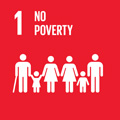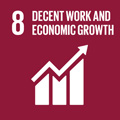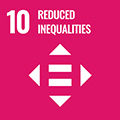- Docente: Rosa Pugliese
- Credits: 6
- SSD: L-LIN/02
- Language: Italian
- Teaching Mode: Traditional lectures
- Campus: Bologna
- Corso: Second cycle degree programme (LM) in Italian Culture and Language for Foreigners (cod. 0983)
-
from Mar 31, 2025 to May 14, 2025
Learning outcomes
By the end of the course students will acquire the theoretical and practical knowledge about teaching a second language to adults who are non-literate or low educated in their first language. Students will know the basic assumptions of literacy in adulthood and will get acquainted with the well-known international specialized field, LESLLA-Literacy Education and Second Language Learning for Adults. Students will also acquire the principles underlying a L2 literacy syllabus and will be able to apply practical tools and methods specifically referred to non-literate people or people of various literacy initial levels.
Course contents
L2 Italian literacy (2nd semester)
The aim of the course is to introduce students to ‘Italian second language literacy’ as a specialized area of the larger field ‘Learning and teaching Italian as a second language’.
After an overview of recent international studies on acquiring literacy skills as an adult, and more specifically on the development of L2 literacy and L2 oral competence in adults who are non-literate, semi-literate or low educated in their first language, the course will focus on the steps required to progress from a basic literacy to A1 level of competence in L2 Italian. Tools teaching to plan lessons/courses for students who are at a pre-A1 level of competence, and to elaborate teaching materials –as well as real-life practices in adult classes for literacy skills – are an integral part of the course contents. Approaches and teaching methodologies adopted at CPIA (Provincial Center of Education for Adult) and at other institutional contexts will also be presented. Together with the adult basic reading and writing skills and social uses of written language, we will consider digital literacy, which is currently intersected with the former (print literacy).
Readings/Bibliography
-
-
· Minuz F., Kurvers J., “LASLLIAM. A European reference guide for LESLLA learners”, in M. D’Agostino, E. Mocciaro (eds.), Languages and literacy in new migration. Research, practice and policy. Selected papers from the 14th Annual Symposium of LESLLA (Literacy Education and Second Language Learning for Adults) 4th-6th October 2018, Palermo, Palermo University Press, 2021, pp. 453-470 [17 pagg.]
F. Minuz, A. Borri, “Literacy and language teaching: tools, implementation and impact”, in Italiano LinguaDue, 2016/2, pp. 220-31 [11 pagg.] https://riviste.unimi.it/index.php/promoitals/article/view/8184
-
· Guida di riferimento Literacy And Second Language for the Linguistic Integration of Adult Migrants (LASLLIAM), promossa dal Consiglio d’Europa, mirata a definire i 4 livelli pre-A1. / Literacy and second language learning for the linguistic integration of adult migrants Strasbourg, Council of Europe, 2022 --
https://rm.coe.int/prems-008922-eng-2518-literacy-and-second-language-learning- couv-texte/1680a70e18
-
· M. D’Agostino (2022), “Giovani, mobili, multilingui, connessi, non di rado analfabeti. Una nuova migrazione fra risorse e bisogni”, in Italiano LinguaDue 1/ 2022. p.1-9.
· L. Gonzalves (2021) “Development of copying skills in L2 adult English learners with emergent print literacy”, in Journal of Second Language Writing, 51, pp.1-14.
· J. A. Altherr Flores (2021), “The semiotics of writing: How adult L2 learners with emergent literacy make meaning in assessment texts through writing”, in Journal of Second Language Writing, 51, pp.1-14.
· M. D’Agostino, E. Mocciaro (2021), “Literacy and literacy practices: Plurilingual connected migrants and emerging literacy”, in Journal of Second Language Writing 51, pp.1-16.
· M. Amoruso, “Un nuovo profilo di apprendenti. Analfabeti plurilingui”, in Italiano LinguaDue 1. 2022, p.p.19-27 [8 pagg.]
· A. Welisch, G. Asta, “La media literacy come supporto all’apprendimento della lingua” in Lingue e Linguaggi 41, (2021), pp. 249-263 [12 pagg.]
· R. Pugliese, “Interazioni narrate di una literacy in L2. 'Mandorle amare' tra letteratura e case study”, in C. Andorno, R. Grassi (a cura di), Le dinamiche dell’interazione. Prospettive di analisi e contesti applicativi, Milano, Studi AiTLA, 2016, pp. 123-138. [15 pagg. ]
Materiali e siti per consultazione
- https://www.leslla.org
- https://www.coe.int/en/web/lang-migrants/overview
- https://www.coe.int/it/web/language-support-for-adult-refugees/list-of-all-tools
-
Other mandatory readings will be given during the course.
Teaching methods
Teaching will be carried out through lectures, classroom discussions and group work assignments (i.e. mainly, analysis of: written texts, activities in language classes, textbooks excerpts), and seminars by experts.
Assessment methods
Students’ knowledge and competence about the theoretical and practical aspects acquired during the course and through the mandatory readings will be assessed by means of an oral exam. Answers to oral questions will be evaluated according to the following criteria:
– extent of knowledge concerning content;
– clarity and skills of synthesis and argumentation;
– skill in explaining links between theoretical and practical aspects of the main topics covered in the course;
– lexical appropriateness and specialized terminology.
Depending on how these criteria are met during the oral exam, i.e. thoroughly, partially or in a limited way, grades will correspondingly be high, average, or low.
Teaching tools
power point presentations, dvd, printed hand-outs, websites and web resources.
Office hours
See the website of Rosa Pugliese
SDGs




This teaching activity contributes to the achievement of the Sustainable Development Goals of the UN 2030 Agenda.
